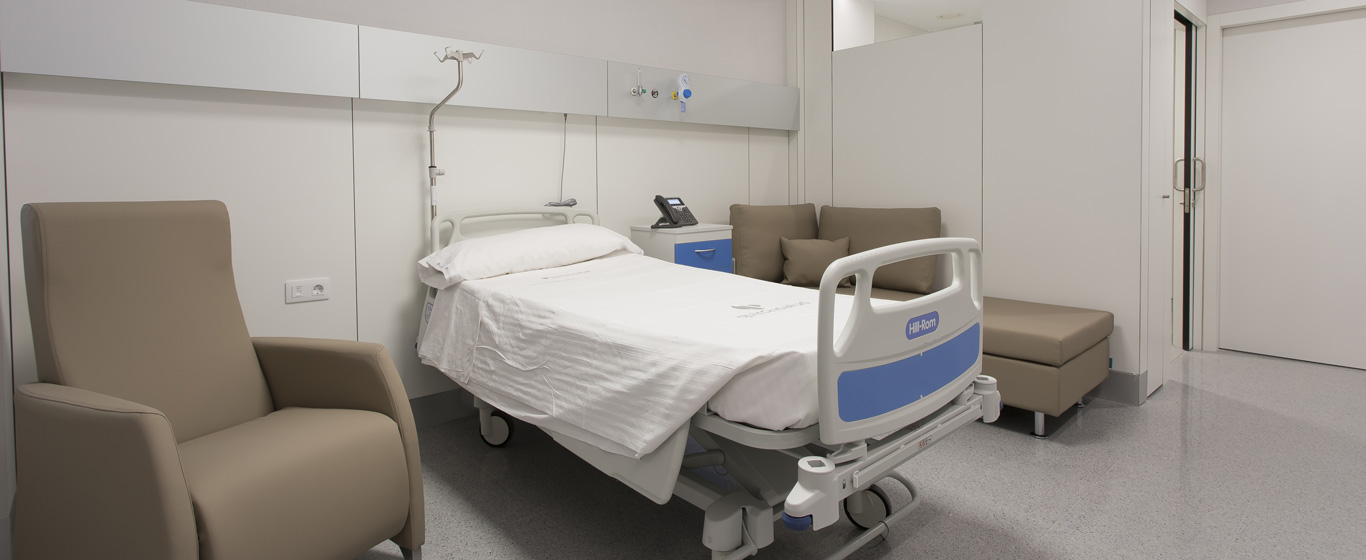Positron Emission Tomography (PET)
Positron emission tomography is a non-invasive diagnostic test used to obtain images of the internal organs' functioning. It utilizes radioactive markers to capture information about the body's biochemical and physiological processes.

General Description
Positron emission tomography (PET) is a non-invasive test used to obtain images of the body's organ functions. This technique uses radioactive markers (radiotracers) that help detect abnormal activities or cellular changes through the emission of radiation from radioactive atoms, as areas with higher biochemical or metabolic activity are typically where pathology exists.
Currently, PET is the only test capable of providing quantitative information about the biochemical and physiological processes of the body thanks to the use of these radiotracers. These medications contain a biological molecule attached to an isotope with a small amount of radioactive material, usually radioisotopes like 18F, 11C, 13N, or 15O, which have a very short half-life and can be used as biological tracers. Fluorodeoxyglucose (FDG), with the empirical formula C6H11FO5, is one of the most widely used substances to observe the heart, lungs, and brain.
Nuclear medicine specialists use PET to detect various diseases, such as cancer, cardiac pathologies, or endocrine disorders in their early stages.
When is it indicated?
Positron emission tomography is primarily used to detect cancerous tumors or to monitor their progression after treatment. It is also useful for diagnosing cardiac pathologies, as it shows areas where blood flow is reduced, or neurodegenerative diseases, as it can detect areas with neuronal degeneration.
How is it performed?
Before the test begins, the radiotracer is injected into a vein in the arm. To ensure it distributes properly throughout the body, about 60 minutes of waiting is required. When FDG is used, glucose levels in the blood are measured to administer insulin if they are elevated.
Patients must remove clothing and metal items before entering the room where the PET is performed, and they typically wear a gown provided by the medical center. Once lying down, the bed is moved into a tube-shaped device. During the test, it is crucial to remain completely still, so muscle relaxants are commonly administered.
In many cases, PET is combined with a CT scan (PET-CT) to merge the obtained images and thus achieve a more precise diagnosis.
Risks
The ionizing radiation emitted by both the PET and the radiotracer is minimal, so it does not cause damage or side effects to the body. In pediatric cases, radiation levels are adjusted to the child’s size and weight. However, it may affect fetal development, so an alternative should be considered for pregnant women.
Allergies to fluorodeoxyglucose have not been described, although allergies to iodinated contrast agents, which are often used for combined PET-CT scans, have been reported.
In rare cases, side effects such as headaches, dizziness, or vomiting may occur.
What to expect from a PET
Positron emission tomography is an outpatient diagnostic method, so no hospitalization is required before or after the test. Before the test, the patient must sign an informed consent.
It is recommended to wear comfortable clothing to facilitate changing and avoid wearing jewelry or metal items. The test duration depends on the areas being studied; a whole-body PET takes between 40 and 60 minutes, while a specific area PET lasts about 20 or 30 minutes. Additionally, there is an approximate 60-minute wait for the radiotracer to distribute.
PET is not painful, except for the usual discomfort from the injection of the radiotracer. The machine used does not produce noise (unlike the CT scanner), so ear protection is not needed.
The patient must remain as still as possible inside the tube, which may cause claustrophobia in some cases.
For precaution, breastfeeding should be suspended for several hours after the test, as well as contact with pregnant women and children. It is also advised to drink plenty of water to help eliminate the radiopharmaceutical. If a muscle relaxant is administered, it is preferable not to drive after the exam.
The results of the positron emission tomography are provided during a follow-up consultation several days after the test.
Specialties requesting PET
PET is carried out by nuclear medicine specialists at the request of other specialties such as internal medicine, oncology, neurology, cardiology, pulmonology, or cardiothoracic surgery.
How to prepare
Depending on the area being studied, the patient may need to fast for at least 6 hours before the test. Those on medication can take it with a little water. Exercise should be avoided that day.
Diabetic patients should suspend Diambén or Metformin treatment, but those who inject insulin can do so in the morning.
























































































